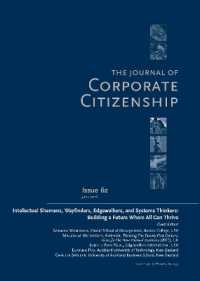- ホーム
- > 洋書
- > 英文書
- > History / World
Full Description
This book is the first of a two-volume set examining the social history of the Hanjiang River region of southern China. It studies the complex social fabric of the region from the Song Dynasty to the early Qing Dynasty, focusing on religious practices, ethnic relations, and social change.
The first part presents the region's geography and history, and sets out the methods for studying its social history. The second part of this book is about the formation of social order between the Song and mid-Ming dynasties. It explores religious beliefs, coastal defense systems, and the governance of ethnic groups. The final part analyzes the relationship between "bandits" and "people" in the mid-Ming and early Qing periods, using local literature, religious practices, and settlement patterns. This analysis reveals how rural militarization and dynastic influence shaped territorial society in the late Ming and early Qing.
This title is an essential resource for scholars and students of pre-modern Chinese social history, historical anthropology, religious studies, maritime history, and ethnic relations.
Contents
1. Introduction Part I Religion, Ethnic Groups and Social Order before the Mid-Ming Dynasty 2. Tales of Gods: Textualization and Local Society during the Song and Yuan Dynasties 3. Coastal Defense, Garrison, and Battalions in the Early Ming Dynasty 4. Local Society of Coastal Area 5. Mountainous Area in the Early Ming Dynasty 6. Different Ethnic Groups in Xingning County Part II From the Intrusion of Japanese Pirates to Coastal Clearances 7. Pirates and Bandits 8. Appeased Pirates Mountain Bandits 9. Organization of Local Armed Forces and the Militarization of Rural Areas 10. Social Unrest and Literature Compilation Part III Local Beliefs and Settlement Patterns 11. Localization of Orthodox Gods 12. Role of the Gentry and Development of the Double Loyal Ministers Belief in the Qing Dynasty 13. Settlement Patterns Coastal and Mountainous Areas 14. Social Transformation of Coastal and Mountainous Areas








